#Burbot
Explore tagged Tumblr posts
Text
Made some little freaks


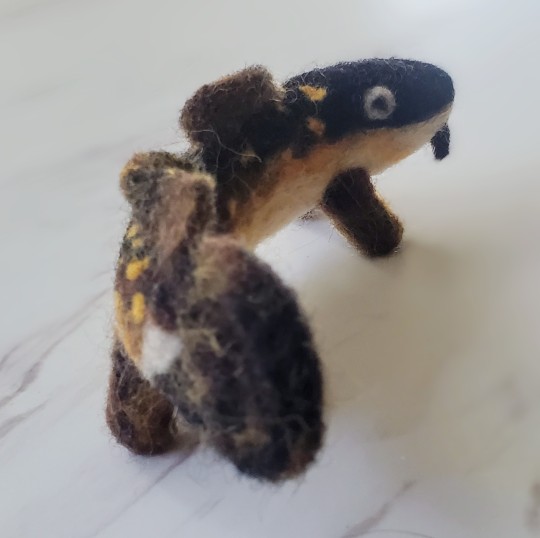
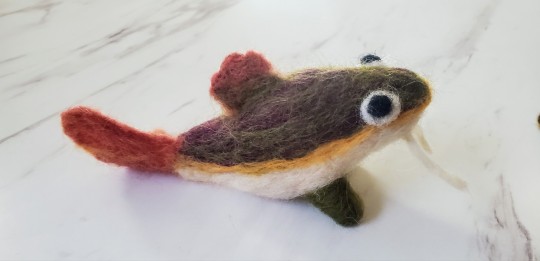

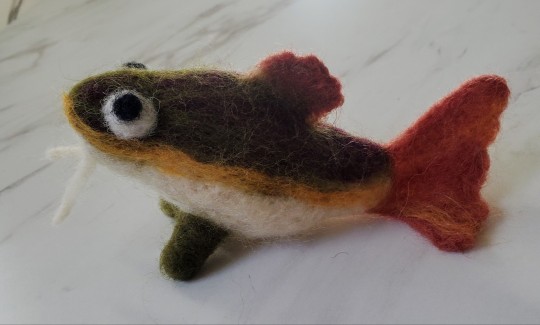
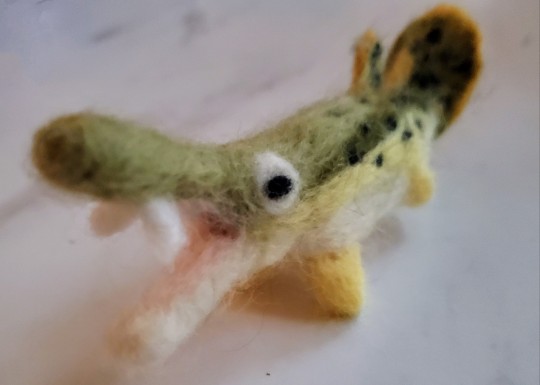

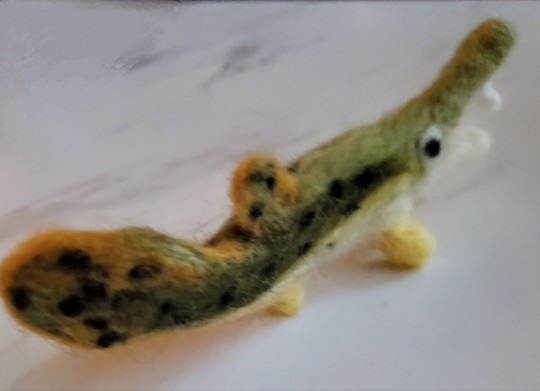
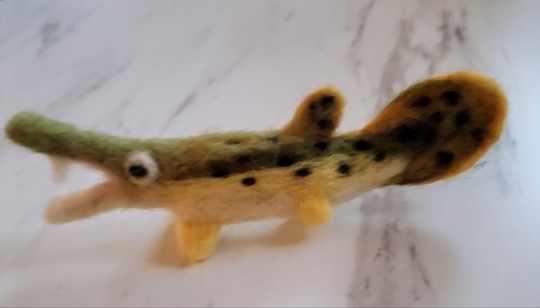
#burbot#redtail catfish#aligator gar#needle felting#felt art#wool#fishblr#fiber art#fish want me#fish fear me#kreechur croft
7K notes
·
View notes
Text
Fishtober Day 4 - Burbot
Check out the creator! ^ [@/fishiscrazy]









🐟 ❄ 🐟 / ❄ 🐟 ❄ / 🐟 ❄ 🐟
Besides being a funny word to say, burbots or bubbots or... they have a ton of names! An interesting one is "The Lawyer" because they're so slimy. Bit mean.
They are freshwater fish - though they are related to the saltwater cod - and they prefer cold waters - but they prefer brackish water for spawning. This occurs from December to March, when it's coldest.
This happens frequently for a few weeks, then they won't spawn again for 2+ years.

Burbot, bubbot, mariah, loche, cusk, freshwater cod, freshwater ling, freshwater cusk, the lawyer, coney-fish, lingcod, or eelpout. That's a lot of names.
#agere#sfw agere#age regression#sfw age regression#agere blog#boy regressor#boyre#sfw agedre#agedre#fish#burbot#lawyer fish#stimboard#agere stimboard
18 notes
·
View notes
Text

Burbot! A cod-like freshwater fish that spawn in very cold water, under the ice. I think it looks like a strange little dinosaur fish! :-)
[ID: an illustration of a serpent-like fish in profile, facing right. It is green-ish in color with darker dorsal stripes and a lighter belly. It has a fan-like tail and one barbel on its chin. It is on a red and orange background with light effects. End.]
309 notes
·
View notes
Text
Daily fish fact #332
Burbot!

Their name comes from the Latin word barba, which means beard! This is due to a single beard-like whisker on their chin. They typically live on the bottom of cool, relatively unmoving bodies of water.
124 notes
·
View notes
Text
Choucroute de la Mer (Seaside Sauerkraut)

Usually, a choucroute garnie, a staple of Eastern France cuisine, is made with juniper-flavoured sauerkraut topped with a variety of meat and sausages, an Alsatian treat appreciated throughout the country in the Winter for its heartiness and warming quality. I will gladly order just that in a comfortable tavern, but at home, I like to cook a lighter but just as tasty Choucroute de la Mer, where meat and sausages are replaced by fish and seafood. It is generous and tasty, a beautiful dish if you’re hosting, which also leaves enough room for dessert!
Ingredients (serves 3):
1 tablespoon unsalted butter
1 tablespoon olive oil
3 fresh burbot tails
about 300 grams/ ounces fresh salmon
half a dozen fresh scallops
1/4 teaspoon fleur de sel or sea salt flakes
1/2 teaspoon freshly cracked black pepper
1/2 cup dry white wine like Muscadet Sèvre et Maine sur Lie or Marlborough Pinot Gris
4 cups (a large tin) juniper-flavoured sauerkraut
a good pinch saffron threads
1/3 cup double cream
a small bunch fresh Parsley
In a large deep skillet or frying pan, melt butter with olive oil over medium-high heat. Once the butter is just foaming, add burbot tails. Cook, about 2 minutes on each side, until golden.
Cut the salmon into three chunky pieces, and add to the skillet as well. Cook, a couple of minutes on each side.
Add scallops and cook, about 1 minute on each side in the hot butter and oil.
Season fish and seafood with fleur de sel and black pepper. Then, deglaze with dry white wine. Reduce heat to low, and cover with the lid. Cook, 5 minutes.
Meanwhile, warm sauekraut in a large, deep skillet over medium heat.
Remove the lid, and gently lift out salmon, burbot and scallops onto the warm sauerkraut. Cover with a lid, keep warm.
Sprinkle saffron threads into the wine in the skillet, and increase heat back to medium. Once slightly reduced, stir in double cream, and brink to a slow boil. Simmer, a few minutes until a lovely yellow sauce coats the wooden spoon.
Finely chop Garden Parsley.
Arrange sauerkraut onto serving plate, and top with burbot tails, salmon pieces and scallops. Generously drizzle with saffron sauce and sprinkle with chopped Parsley.
Serve Choucroute de la Mer immediately, with a glass of chilled Muscadet Sèvre et Maine sur Lie or Marlborough Pinot Gris.
#Recipe#Food#Choucroute de la Mer#Choucroute de la Mer recipe#Seaside Sauerkraut#Seaside Sauerkraut recipe#Sauerkraut#Sauerkraut recipe#Fish#Fish and Seafood#Burbot#Burbot Tail#Salmon#Scallops#Fresh Scallops#Butter#Olive Oil#Fleur de Sel#Black Pepper#Black Peppercorns#Dry White Wine#Muscadet#Muscadet Sèvre et Maine sur Lie#Saffron#Saffron Threads#Double Cream#Parsley#Garden Parsley#Fresh Parsley#Celebratory Food
4 notes
·
View notes
Text

Stichling | Stickleback | ...

(Europäischer) Wels | Catfish, sheatfish | Silurus glanis

Flussbarsch & Rotauge (oder Plötze) | European perch & Common roach | Perca fluviatilis & Rutilus rutilus

Zander, Flussbarsch & Quappe | Sander, European perch & Burbot
Sander lucioperca & Perca fluviatilis & Lota lota
(Die Quappe ist rechts unter der Baumwurzel. | The burbot is under the tree root, on the right side.)

Brassen & Kaulbarsch | Common breams & (Eurasian) ruffe | Abramis brama & Gymnocephalus cernua

(Fluss-) Barben | Common barbels | Barbus barbus
🐟
"Fische sind Freunde" | "Fish are friends"
🐟
[Biosphärium Elbtalaue, 10.08.2024]
#Fische#Fish#Stichling#Stickleback#Wels#Europäischer Wels#Catfish#Sheatfish#Silurusglanis#Flussbarsch#Commonperch#Percafluviatilis#Rotauge#Plötze#Commonroach#Rutilusrutilus#Zander#Sander#Sanderlucioperca#Quappe#Burbot#Lotalota#Brassen#Commonbream#Abramisbrama#Kaulbarsch#Eurasianruffe#Ruffe#Gymnocephaluscernua#Flussbarbe
1 note
·
View note
Text
Reel-in These 5 Species in Your Next Ice Fishing Trip (+ One You Don't)
It’s the most wonderful time of the year, and no, it’s not because of Christmas. It’s because the waterways that you were bobbing up and down in just a few months ago are now covered in a layer of ice! However, heading out into freezing temperatures to drill a hole in the ground and jigging some brightly colored lures might seem odd to some. There is an inexplicable reason why many opt to pursue…

View On WordPress
#burbot#crappies#fish for tip-ups#fishing#Ice fishing#jigging#jumbo perch#jumbo yellow perch#lake trout#largemouth bass#lipless crankbait#minnows#mudpuppies#mudpuppy#night ice fishing#pickerel#smelts#tip-ups#walleye#what to catch icefishing#what to target while icefishing#whitefish
0 notes
Text









I don't remember if I showed it or not
#my ocs#my art#ocs#art#pillars of eternity#OC: Muffin (PoE)#orlan#fish setting#OC: Nawaga Burbot#OC: Martin Burbot#splatoon
57 notes
·
View notes
Text

new fishing update???? not clickbait????
#toontown#corporate clash#art#ttcc#Dave Brubot#Dave Burbot#Major Player#I am so sorry#There is a fish called Burbot and I knew what I had to do#Thanks chat#toonblr
56 notes
·
View notes
Text
you know i must have been bone-tired when this part of the herb brides lore didn't come to my mind when i discussed how the Kin fundamentally differs from the cultures it is inspired by um There Is The Human Sacrifice part. like it's an important part of pathologic 2 that you are doing human, or anthropomorphic (if you want to see the Herb Brides as closer to spirits, which comes with its own set of problematics regarding how to approach their oppression) sacrifice. it's an important part of pathologic 2 that you kill a woman, as part of the journey and in direct resonance with you ritualistically killing cattle earlier, and she offers herself to you with cultural and religious significance.
human sacrifices have been done across the globe for millennia, but i cannot, for the life of me, find any source at all that mentions the Buryats (since that was the discussion point) partaking in human sacrifices by the turn of the 19th-early 20th century (or even anything past the 16th). every single source mentioning offerings and sacrifices i've read mentions animals, things such as milk and vodka, and often both at once. would love to read anything about these rituals if papers exist, but i'm personally drawing a blank.
the Kin has Obvious and very Visible influences but it also differs from specific (in this discussion's case, the Buryats) or wider (here, turkic/mongolic as a whole) cultures from the area by so many pieces, big and small, that i wouldn't have enough appendages on my whole body to count them all. and sister. i have plenty of appendages.
#i AM reading a paper that mentions the human sacrifices at Mongol burials where people (typically servants or family) would be sacrificed#to accompany the dead; as well as the Shor practice of sacrificing women/girls (replaced apparently quickly by sacrificing ducks)#but those seem pretty old [the Mongol part mentions the 13th century] & like. nothing about the buryats in that time period#i'm like 85% sure i saw in the beginning of being into patho someone saying how equating the Kin; who practice human sacrifices [& others]#to correlate/be meant to represent Real Life ethnicities is insulting because They Don't Do That.#and like. everythingggg that touches upon representation/appreciation/appropriation/theft is subjective and#informed my how much leeway you're willing to give the creators so that's like#bro i'm just reading PDFs#also just found out the discussion of ''The Kin Is Obviously Inspired But Not Meant To Represent [x]'' is over 2yrs old. we're still at it.#as anon said. ''unless you're tolkien; coming up with a whole fictional language is hard''.#anyways appendage time. stuff that differs just out of the top of my head:#everything relating to the religion which is almost a complete inverse of buryat tengrist/shamanic faith + don't get me started on buddhism#the clothes. the homes. the creation myths; beyond the apparition of Clay; which is present in so many cultures on earth#no swan ancestor. no lake worship. no sky/heavens. no tens of named hierarchical deities. NO BURBOT! no hats. no hats (burts into tears)#NO HORSES? ON THE EURASIAN STEPPE?#the belief that earth mustn't be cut is so buryat. i'm sure i've read it. no idea if it is also in other mongolic peoples but buryat it is.#also a bull-ancestor/bull totem. that exists in buryat tribes; but they also have a bunchhhhh of other sacred animals (including. swans.#also horses. there's this [charm?] made out of horse hair there is)#neigh (blabbers)#i'm realizin how crazy i sound repeating shit that has been said 2yrs ago but like someone already mentioned the human sacrifice.#someone already mentioned the clothes. someone already mentioned the yurts/gers. someone already mentioned the religion#like i'm just. repeating stuff. and yet. give it up for year 2
21 notes
·
View notes
Text
Beware the legal wiles of the burbot (The unofficial “lawyer” of the lake); His manner — all the warmth of lemon sherbet In late December. Woe to those who break The law, or even casually disturb it — He’ll seize on trivialities to make A case wherein the slightest provocation Is fertile ground for fishy litigation.
#shimyereh writes poetry#'lake lawyer' is apparently a synonym for 'burbot'#as is 'eelpout'#this fish has a lot of funny names
11 notes
·
View notes
Text
If dude don't know what a trout is
there just is no hope

just off the top of my head
bitterling
blenny
blobfish
bluefish
bombil
bonefish
brown trout
burbot
butterflyfish
chub
clingfish
clownfish
cod
convict cichlid
cowfish
devils hole pupfish
discus
dogfish
donkey fish
dory
electric eel
and i better stop there or i'll be hitting the word limit before long
1K notes
·
View notes
Text



Travel back [...] a few hundred years to before the industrial revolution, and the wildlife of Britain and Ireland looks very different indeed.
Take orcas: while there are now less than ten left in Britain’s only permanent (and non-breeding) resident population, around 250 years ago the English [...] naturalist John Wallis gave this extraordinary account of a mass stranding of orcas on the north Northumberland coast [...]. If this record is reliable, then more orcas were stranded on this beach south of the Farne Islands on one day in 1734 than are probably ever present in British and Irish waters today. [...]
Other careful naturalists from this period observed orcas around the coasts of Cornwall, Norfolk and Suffolk. I have spent the last five years tracking down more than 10,000 records of wildlife recorded between 1529 and 1772 by naturalists, travellers, historians and antiquarians throughout Britain and Ireland, in order to reevaluate the prevalence and habits of more than 150 species [...].
In the early modern period, wolves, beavers and probably some lynxes still survived in regions of Scotland and Ireland. By this point, wolves in particular seem to have become re-imagined as monsters [...].
Elsewhere in Scotland, the now globally extinct great auk could still be found on islands in the Outer Hebrides. Looking a bit like a penguin but most closely related to the razorbill, the great auk’s vulnerability is highlighted by writer Martin Martin while mapping St Kilda in 1697 [...].
[A]nd pine martens and “Scottish” wildcats were also found in England and Wales. Fishers caught burbot and sturgeon in both rivers and at sea, [...] as well as now-scarce fishes such as the angelshark, halibut and common skate. Threatened molluscs like the freshwater pearl mussel and oyster were also far more widespread. [...]
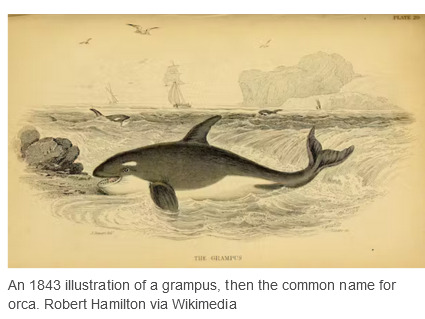
Predators such as wolves that interfered with human happiness were ruthlessly hunted. Authors such as Robert Sibbald, in his natural history of Scotland (1684), are aware and indeed pleased that several species of wolf have gone extinct:
There must be a divine kindness directed towards our homeland, because most of our animals have a use for human life. We also lack those wild and savage ones of other regions. Wolves were common once upon a time, and even bears are spoken of among the Scottish, but time extinguished the genera and they are extirpated from the island.
The wolf was of no use for food and medicine and did no service for humans, so its extinction could be celebrated as an achievement towards the creation of a more civilised world. Around 30 natural history sources written between the 16th and 18th centuries remark on the absence of the wolf from England, Wales and much of Scotland. [...]

In Pococke’s 1760 Tour of Scotland, he describes being told about a wild species of cat – which seems, incredibly, to be a lynx – still living in the old county of Kirkcudbrightshire in the south-west of Scotland. Much of Pococke’s description of this cat is tied up with its persecution, apparently including an extra cost that the fox-hunter charges for killing lynxes:
They have also a wild cat three times as big as the common cat. [...] It is said they will attack a man who would attempt to take their young one [...]. The country pays about £20 a year to a person who is obliged to come and destroy the foxes when they send to him. [...]
The capercaillie is another example of a species whose decline was correctly recognised by early modern writers. Today, this large turkey-like bird [...] is found only rarely in the north of Scotland, but 250–500 years ago it was recorded in the west of Ireland as well as a swathe of Scotland north of the central belt. [...] Charles Smith, the prolific Dublin-based author who had theorised about the decline of herring on the coast of County Down, also recorded the capercaillie in County Cork in the south of Ireland, but noted: This bird is not found in England and now rarely in Ireland, since our woods have been destroyed. [...] Despite being protected by law in Scotland from 1621 and in Ireland 90 years later, the capercaillie went extinct in both countries in the 18th century [...].
---
Images, captions, and all text above by: Lee Raye. “Wildlife wonders of Britain and Ireland before the industrial revolution – my research reveals all the biodiversity we’ve lost.” The Conversation. 17 July 2023. [Map by Lee Raye. Bold emphasis and some paragraph breaks/contractions added by me. Presented here for commentary, teaching, criticism purposes.]
1K notes
·
View notes
Text
Festive Fish Terrine
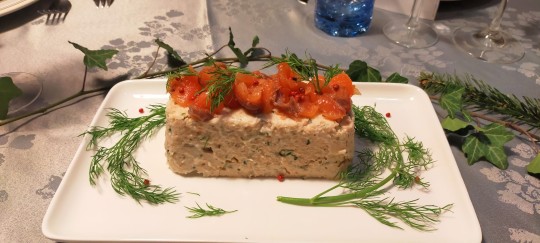
Our New Year’s Day lunch opened with this light, fluffy and tasty Festive Fish Terrine, a proud achievement, and really rather easy to make!
Ingredients (serves 4 to 6):
200 grams/7 ounces fresh burbot tails
120 grams Manuka Honey and Gin Cured Salmon
6 fluffy sprigs Garden Parsley
4 fluffy sprigs Garden Dill
a pinch of fleur de sel or sea salt flakes
1/4 teaspoon freshly cracked black pepper
1 heaped tablespoon thick crème fraîche or sour cream
2 tablespoons dry white wine, like Sèvre et Maine sur Lie Muscadet or Marlborough Rapaura Pinot Gris
1 tablespoon good quality Cognac
2 large egg whites
a pinch of salt
more Manuka Honey and Gin Cured Salmon and Dill, for garnish
a teaspoon pink peppercorns, for garnish
The day before serving the terrine, preheat oven to 160°C/320°F. Lightly grease a 600-millilitre/20-fluid-ounce terrine dish with olive oil. Set aside.
Remove burbot flesh from its cartilage, and cut into small chunks.
Cut Cured Salmon into thin slices, and combine with burbot chunks, in the bowl of a food processor.
Roughly chop Parsley and Dill, and add half of the chopped herbs to the food processor. Process until finely chopped, but before it becomes a paste. Spoon into a medium bowl. Season with fleur de sel and black pepper. Gently stir in crème fraîche. Then, drizzle with white wine and Cognac, and give a gentle stir until combined.
In another medium bowl, beat egg whites with a pinch of salt, gradually increasing speed to high, until stiff peaks just form.
Gently fold beaten egg whites into fish mixture. Spoon half of the fish mousse into the terrine dish. Sprinkle an even layer of remaining chopped Dill and Parsley, and cover with remaining fish mousse, levelling the top with a spatula. Close with the lid and place in the middle of a large baking dish. Fill baking dish to three-quarters with warm water, to make a bain-marie.
Place baking dish in the middle of the oven, and cook in the bain-marie, 30 minutes, at 160°C/320°F. Once cooked remove bain-marie from the oven, and let cool, half an hour.
Place terrine in the refrigerator, to chill and set overnight.
The next day, carefully and gently up-turn fish terrine onto serving dish.
Cut thin slices of Cured Salmon, and arrange them on top of the terrine. Garnish with Dill and pink peppercorns.
Serve Festive Fish Terrine, with rye bread, and a glass of chilled Sèvre et Maine sur Lie Muscadet or Marlborough Rapaura Pinot Gris.
#Recipe#Food#Festive Fish Terrine#Festive Fish Terrine recipe#Fish Terrine#Fish Terrine recipe#Terrine#Terrine recipe#Fish#Fish and Seafood#Burbot#Burbot Tail#Salmon#Cured Salmon#Manuka Honey and Gin Cured Salmon#Parsley#Fresh Parsley#Dill#Fresh Dill#Fleur de Sel#Black Pepper#Black Peppercorns#Crème Fraîche#Sour Cream#Egg Whites#Dry White Wine#White Wine#Cognac#Pink Peppercorns#Festive recipe
1 note
·
View note
Text
While white-tailed eagles, bustards and cranes were also all much more common than they are today, some other now-ubiquitous species were much less common before the industrial revolution. Rabbits were still mainly a coastal species except in lowland England, and roe deer were found wild only in the north of Scotland and Eryri (Snowdonia) in north-west Wales. There were no grey squirrels, and brown rats were only introduced at the very end of the period. On the other hand, red squirrels and ship rats were still widespread, and pine martens and “Scottish” wildcats were also found in England and Wales. Fishers caught burbot and sturgeon in both rivers and at sea, where they also pulled in plentiful amounts of tuna and swordfish, as well as now-scarce fishes such as the angelshark, halibut and common skate. Threatened molluscs like the freshwater pearl mussel and oyster were also far more widespread.
270 notes
·
View notes
Text


Legit forgot i had a tumblr but teehee dave burbot with his TOTALLY canon gf thats totally canon in toon town ahahahahah
#art#original character#oc#fanart#major player#toon town corporate clash#dave brubot#ttcc major player#oc x canon#ttcc oc#ttcc fanart#ttcc
51 notes
·
View notes